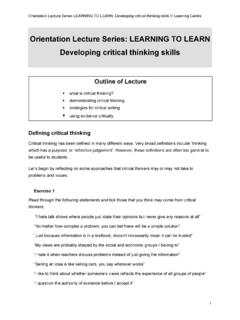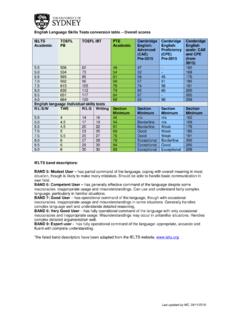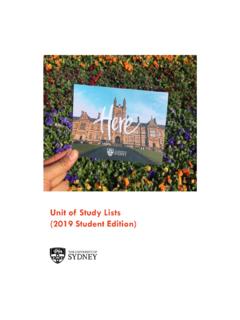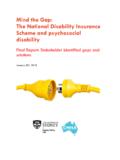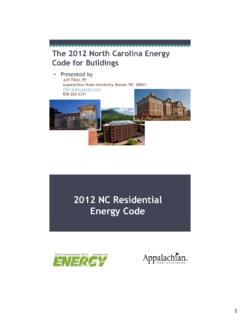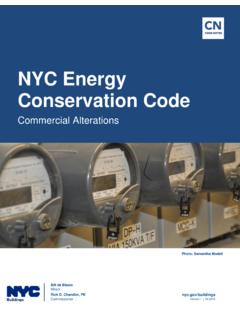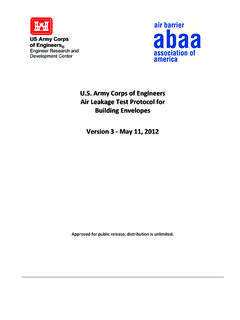Transcription of INDOOR AIR QUALITY & THERMAL COMFORT …
1 SAFETY HEALTH & WELLBEING 1 WHS_GEN_GUI_Indoor Air QUALITY and THERMAL COMFORT INDOOR AIR QUALITY & THERMAL COMFORT guidelines CONTENTS 1 Introduction .. 2 2 Purpose .. 2 3 INDOOR air QUALITY .. 2 Ventilation .. 2 Natural ventilation .. 2 Mechanical ventilation .. 3 Airborne contaminants .. 3 Oxygen concentration .. 3 Carbon dioxide .. 3 Evaluating INDOOR air QUALITY .. 3 Risks to health and safety .. 4 4 THERMAL COMFORT .
2 4 Temperature .. 5 Naturally ventilated spaces .. 5 Extreme weather conditions .. 5 Relative humidity .. 5 Air 5 The impact of THERMAL discomfort on workers .. 6 Managing hotter than normal INDOOR conditions .. 6 Personal strategies .. 6 Local management strategies .. 6 Managing cooler than normal INDOOR conditions .. 6 5 Reporting issues .. 7 Concerns abour INDOOR air QUALITY .. 7 Concerns about THERMAL COMFORT .. 7 6 Assessing and managing concerns .. 7 Assessing and managing risks associated with INDOOR air QUALITY .
3 7 Managing THERMAL discomfort .. 7 7 Requests for infrastructure related control measures .. 8 Project prioritisation .. 8 8 Document control .. 8 SAFETY HEALTH & WELLBEING 2 WHS_GEN_GUI_Indoor Air QUALITY and THERMAL COMFORT 1 INTRODUCTION The University aims to provide a healthy and comfortable INDOOR study and work environment. Maintaining INDOOR air QUALITY (IAQ) is essential to the health and wellbeing of building occupants.
4 INDOOR teaching and work spaces require adequate fresh air and must be kept free of airborne contaminants. THERMAL COMFORT is a more subjective attribute of the INDOOR environment. Although the risks to health associated with THERMAL discomfort are relatively low, the University acknowledges that THERMAL COMFORT can have a significant impact on productivity and overall wellbeing. For the purpose of this document, IAQ and THERMAL COMFORT will be dealt with separately. 2 PURPOSE This guideline has been developed to provide the University community with information about IAQ and THERMAL COMFORT , and outline the processes for staff and students to follow if concerned about either issue.
5 3 INDOOR AIR QUALITY INDOOR air QUALITY (IAQ) is a term used to describe the QUALITY of the air within a building. The QUALITY of our INDOOR air is heavily influenced by the ventilation of the area and the activities carried out in and around the building. VENTILATION Ventilation is the process by which fresh air is provided and stale air is removed. INDOOR teaching and work spaces can be naturally ventilated, mechanically ventilated or a combination of both. The University has many buildings and thousands of work spaces of varying age, usage, occupancy and design.
6 Most of our older buildings were designed with naturally ventilated work spaces. Some of these work spaces remain naturally ventilated; others have been retrofitted with mechanical ventilation and/or air conditioning. Newer University buildings have been designed with fully centralised heating, ventilation and air-conditioning systems (HVAC). NATURAL VENTILATION Natural ventilation relies on air movement through openings such as windows and doors. The effectiveness of natural ventilation is influenced by the location, design and size of openings, outdoor weather conditions and the QUALITY of the outdoor air.
7 Naturally ventilated work spaces usually have openings to the external environment ( windows) that in total are the size of at least five percent of the floor area of the room. Natural ventilation is effective for maintaining IAQ. Natural ventilation also has the advantage of providing users with a greater level of control by allowing them to open and close doors, windows and louvers to adjust the INDOOR conditions. Where there is insufficient natural ventilation, mechanical ventilation can be used to create additional air movement, draw fresh air from the outside and circulate it through the workplace.
8 SAFETY HEALTH & WELLBEING 3 WHS_GEN_GUI_Indoor Air QUALITY and THERMAL COMFORT MECHANICAL VENTILATION Most of the workspaces in our newer buildings are heavily reliant on mechanical ventilation to provide fresh air and exhaust respired carbon dioxide. Modern HVAC systems provide both ventilation and air conditioning. Typically, fresh air is drawn from the external environment, filtered and then conditioned by adding/removing heat.
9 The conditioned air is then circulated around the building, with a percentage of fresh air being continually introduced and a percentage of stale air being continually relieved. Some buildings use inbuilt carbon dioxide sensors to monitor the effectiveness of the ventilation and regulate the volume of fresh external air being supplied to different parts of the building. The University s mechanical ventilation and HVAC systems are regularly serviced and maintained in accordance with relevant Australian Standards. AIRBORNE CONTAMINANTS INDOOR air contaminants can originate from a number of sources including: Respired carbon dioxide Microbial growth, mould spores, legionella Airborne particulates, vapors, aerosols and odours generated by work activities, chemical Airborne particulates from disturbed or deteriorating building materials asbestos and lead Contaminants from the external environment, vehicle exhaust fumes and pollen.
10 No-one should be exposed to a contaminant in an airborne concentration that exceeds the exposure standard for that specific substance or mixture. In the absence of specific exposure standards, a number of generic IAQ guidelines are provided for particulate matter and volatile organic compounds. OXYGEN CONCENTRATION The concentration of oxygen in air must be maintained at levels between and Oxygen concentration is not usually a problem in normal University study and work spaces. However, some areas where asphyxiant gases and compressed oxygen are stored or used may pose a risk of reduced or elevated oxygen levels.
